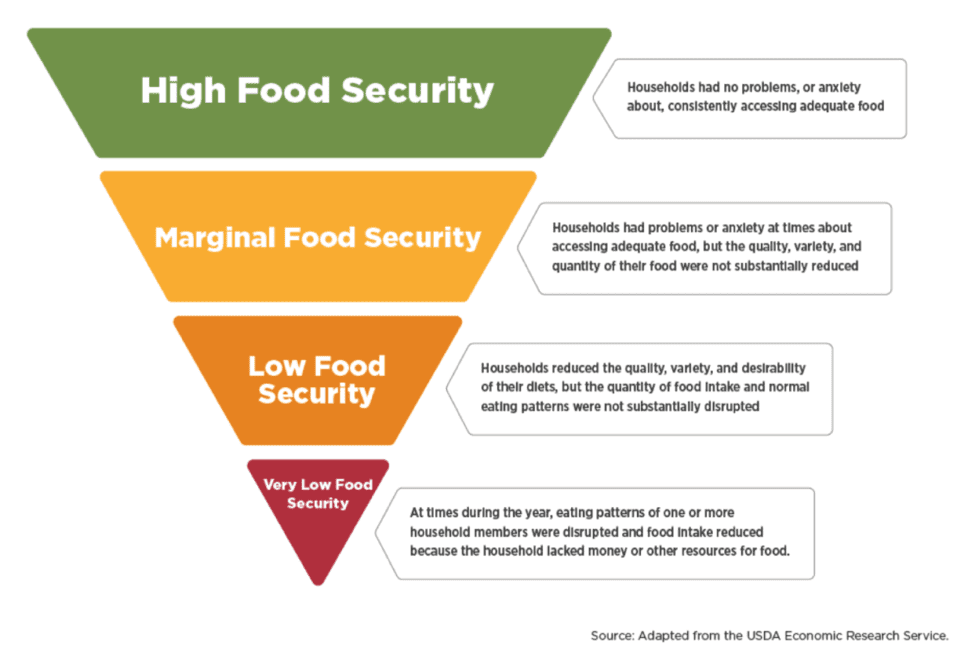Food insecurity.
What is it? How prevalent is it in America? And what are the impacts?
The United States Department of Agriculture (USDA) defines food insecurity as a lack of consistent access to enough food required to live an active, healthy life. It’s described in terms of a full range of security from high to marginal food security at the top end down to low and very low on the bottom.
If you look at the statistics, the numbers are eye-opening. According to the USDA’s Economic Research Service from a 2017 report on household food security, an estimated one in eight Americans are food insecure. This total includes more than 12 million children and equals nearly 40 million people overall.
This means a staggering number of students are entering our schools — day in, day out — who cannot afford proper nutrition and are often unwilling to look for help because many of the stigmas associated with seeking help are just too big to overcome. The result is a growing student population without proper nutrition, at risk for health repercussions and inadequate fuel for successful academic studies.
There’s good news, though.
Because more and more focus is being put on food insecure students, school nutrition directors are focusing this awareness into solutions to help hungry students. They are engaging local populations with new efforts to help curb hunger in the classroom, including these three important micro trends:
Breakfast and Supper in Schools
One way to make sure students avoid hunger at home is to serve them at-home meals in school. Though breakfast and supper are traditionally eaten in the home, by thinking outside the box, capitalizing on available reimbursement funds, and making a commitment to provide important nutrition, many school districts are leading the way in national efforts to fight food insecurity.
Angel Funds
Some school districts across the country are experiencing success with programs called Angel Funds. Essentially, these are pools of money donated by individuals, families, businesses, or charitable organizations to help create a positive impact on students’ lives. As an example, a local Rotary Club could donate $5,000 to help fund additional meal services to those who fall in the free and reduced categories.
Food Sharing Programs
Another way that schools can encourage students to help other students is with a concept called sharing tables or carts. If a student receives a food item in the lunch line that they don’t intend to eat – like a piece of fruit – instead of throwing it out, they can place it on a table or cart making it available to other students. Not only does this help hungry students, but it also significantly reduces waste.
Food Banks
Finally, district-wide food banks are a great way to not only get food to those who need it most but also help reduce food waste. On-campus or district food banks are a great way to use leftover foods for good use.
Food insecurity is listed as #11 on our 2019 Foodservice Trends Report. Though they’re not listed in any particular order, we invite you to learn about all 12 of them.






